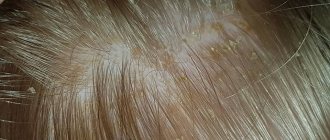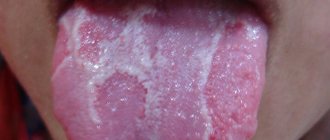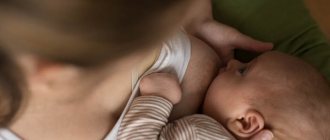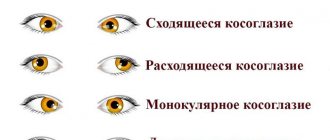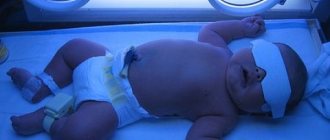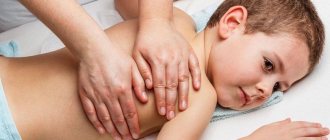What is prickly heat
Miliaria (heat rash) is a skin disease that often occurs in newborn babies.
The skin of a child under one year old is very sensitive to even the slightest environmental influences and illiterate care, as a result of which redness and rashes may appear on it. In itself, prickly heat in newborns is not dangerous; it cannot be contracted. However, inexperienced parents may mistake the symptoms of dangerous problems (allergies or infections) for signs of prickly heat, because they are often similar. But if prickly heat can be easily treated with home remedies, treatment of infections and allergies requires urgent medical attention.
Diagnostic methods and when to see a doctor?
If a child develops prickly heat, it is necessary to contact a medical facility in the following situations:
- The child becomes too restless;
- The skin rash does not disappear for a long time;
- The formation of swelling and inflammation is observed;
- There is a high temperature that does not respond to medications;
- If parents cannot independently determine the cause of changes in the skin.
When visiting a doctor, a visual examination of the child takes place. Most often, this type of diagnosis is sufficient to establish a diagnosis.
However, when an advanced stage of miliaria is observed in a newborn, additional tests may be prescribed such as:
- Blood analysis;
- Bacterial sowing;
- Taking the contents of the bubble for analysis;
- Scrape off the bubbles.
After receiving the test results, the doctor prescribes appropriate treatment and care for the newborn; if necessary, the child is placed under the supervision of a specialist.
Why does it often occur in newborns?
If your baby has heat rash, don’t worry, because you can get rid of it quite quickly if you follow simple rules for caring for your child’s skin. Just try to start treatment as early as possible so that the process does not reach a serious stage.
Usually prickly heat in babies occurs in the summer heat. But, if you are used to wrapping your child in a blanket that is too warm in winter and spring, then it may appear in the cold season. When a baby's sensitive skin is severely irritated, a small red rash appears on it - the main sign of heat rash.
Why is the skin of newborns prone to prickly heat? It's all about unformed sweat glands, which will begin to work in normal thermoregulation mode only by the age of 5-6 years. In addition, children's skin is still very thin and sensitive, it has very powerful blood circulation, and it consists of 85% water (unlike adult skin, which retains only 65% moisture).
The processes of constriction and dilation of blood vessels, which occur quickly in an adult body, are still slowed down in a child’s body - so thermoregulation also occurs very slowly. This is why the newborn’s body overheats and becomes hypothermic instantly.
Treatment
In order to get rid of prickly heat as quickly as possible and cure it, it is necessary to eliminate possible external negative factors (uncomfortable clothing, overheating) and follow the rules of hygiene. To treat affected areas of the skin, antiseptic creams are used to smear the affected areas or preparations for prickly heat (for example, Furacilin solution) in the form of lotions or baths.
In severe cases, with associated infection, the doctor prescribes pills against prickly heat, which help cure the disease: antibiotics, antihistamines, anti-inflammatory.
Among other therapeutic methods of dealing with how to remove symptoms and cure prickly heat, physiotherapy, herbal medicine, and laser treatment of hyperhidrosis are used.
When treating a disease in infants, it should be remembered that maintaining optimal temperature (up to 22°) and humidity (up to 70%) in the house helps to cure the disease faster. It is also necessary to replace creams with baby powders, which will absorb excess moisture, allowing the baby's skin to breathe.
Causes of heat rash in infants
And yet, even in hot weather, heat rash may not appear in a newborn if the baby’s skin is always breathing. But places where air flows poorly are high-risk areas. Most often, overheating of a baby’s body is caused by too warm clothes or a blanket, as well as tight swaddling: without air access, sweat cannot evaporate in time, and when it accumulates, irritation occurs.
The most common causes of prickly heat:
- keeping the child in a stuffy, hot and humid room;
- Irregular bathing of the child;
- frequent use of fatty cream, especially in hot weather;
- the use of children's clothing not made from natural, but from synthetic materials;
- the child is constantly in a diaper;
- heavy sweating due to increased body temperature;
- dressing the baby in tight and very warm (unsuitable for the weather) clothes;
- wrapping yourself in warm blankets.
The skin of children who were born prematurely, as well as those who are overweight and have diabetes, is more likely to develop rashes because their skin practically does not synthesize the pigment melanin. Normally, it is produced by special cells - melanocytes, “coloring” a person’s hair, skin and eyes a certain color. In addition, melanin has a special function - protecting the body from sunlight. When melanin is not synthesized enough in the skin, it becomes very sensitive to ultraviolet radiation.
Miliaria can also be a concomitant symptom when a baby is sick with acute respiratory infections, measles, tonsillitis, or pneumonia.
Causes of prickly heat
The following types of causes most often contribute to the occurrence of prickly heat on the skin of a newborn:
- Use of diapers;
- Tight and uncomfortable collar on things;
- Swaddle the baby too tightly;
- Using warm clothes during the hot season;
- Using baby cream in large quantities;
- Finding a newborn in a stuffy room;
- Keeping the baby in one position for a long time;
- The child’s hair is too long and hangs loosely on the shoulders;
- Poor quality material from which the newborn's clothes are made.
In the summer, it is necessary to avoid dense fabrics that contribute to poor air penetration. At a young age, when using a stroller, it is not recommended to cover it with a cover during long walks.
Symptoms and types: what does prickly heat look like and how does it manifest in infants?
Miliaria can manifest itself with various symptoms:
- in the form of nodules or bubbles against the background of red skin, which does not merge into a single “picture”; such rashes can most often appear in skin folds - on the neck, groin, armpits; they can cause pain and also be very itchy (this becomes obvious when the baby tries to scratch the redness); similar symptoms may last 1-2 weeks;
- in the form of silver or white bubbles that appear on the neck, torso or face. Bubbles with contents can merge into a single large spot, then they burst, gradually dry out and peel off; such a rash is usually not painful or itchy, and symptoms last no more than three days;
- in the form of flesh-colored bubbles: they may appear several hours later, after the baby has overheated and sweated; bubbles appear on the torso, arms and legs and disappear quite quickly, leaving no traces;
- in the form of complicated forms (white and yellow prickly heat).
Frequently asked questions about heat rash
How to treat prickly heat?
When treating prickly heat in adults and children, antiseptic, antibacterial, antihistamine, and adsorbent agents are used in various dosage forms. Tablets, solutions, ointments, creams.
How does prickly heat manifest?
The disease manifests itself in the form of rashes of vesicles with transparent filling (pustules) or in the form of reddish nodules (papules). Accompanied by itching, inflammation, and sometimes pain. It is localized in places with insufficient ventilation (in natural folds, in areas with abundant hair).
Is it possible to cure heat rash?
It is possible to recover from pathology. In some cases, the disease goes away without a trace in the early stages. With treatment, you can get rid of the disease in about 14 days (in children - up to 5 days). Severe forms (pustular, deep) require long-term treatment - over several months.
Allergies, chickenpox and prickly heat: how to distinguish?
As already mentioned, the main symptom of prickly heat is a rash and redness of the skin. These manifestations of miliaria may affect only one area of the baby's body (for example, the armpits or groin), or they can spread more widely. If your child is very young, the symptoms of heat rash can be irritating, causing anxiety and disrupting sleep. But since chickenpox, measles and allergies begin with symptoms similar to prickly heat, it is better to show the baby to a pediatrician.
How to understand that a child has heat rash and not another disease? Remember: have you violated the hygiene rules for caring for your baby’s skin over the past few hours? Namely:
- if you have poorly maintained hygienic skin care, miliaria in newborns appears in the neck area;
- if the child overheats and has been wearing clothes made of synthetic fabrics for some time, prickly heat will appear on the back;
- if you often apply a rich cream in the groin area and rarely remove your baby’s diaper, prickly heat will develop in the groin area and buttocks;
- if the rash from prickly heat that appears on the neck is not treated in time, it can spread to the face;
- when the baby is constantly wearing a hat (even at home and on hot days), a rash may appear in the head area.
If you treat the baby’s delicate skin in a timely manner and follow the rules of care, the prickly heat will go away quite quickly. But a rash due to infection or an allergic reaction, on the contrary, will spread progressively.
Ointments and creams for prickly heat in children: the best remedies
Modern medicine has many remedies to treat the unpleasant symptoms of heat rash. Emulsions, creams, solutions, ointments (for itching and flaking) can be used. There are proven means and branches of traditional medicine.
Homemade solutions
If you don’t have effective medications at hand to eliminate the unpleasant symptoms of heat rash, use available methods that will help relieve your baby of itching:
- A solution of baking soda and a glass of drinking water is prepared very simply: mix 1 tsp. baking soda in liquid and moisten the affected area with a cotton pad several times a day;
- manganese solution also relieves itching well and prevents further rashes and complications;
- starch solution: 80 grams of powder per 1 glass of liquid helps a lot during bathing.
Ointments against prickly heat
There are many special ointments that are not so expensive and are quite effective for prickly heat:
- Zinc ointment is one of the most popular remedies that actively fights many rashes, even in an advanced stage. It is applied in a thin layer to the baby’s cleansed skin several times a day;
- “Nystatin” is another popular remedy that needs to be applied along with zinc ointment several times a day;
- “Bepanten” in the form of an ointment is often used for babies from birth, it nourishes the skin and moisturizes it. The skin is restored and becomes smooth.
Creams for prickly heat
In order not to provoke an allergic reaction in delicate baby skin, it is recommended to use creams with a special composition:
- "Emolium" plant-based cream, nourishes and moisturizes;
- "Desitin" is actively used for newborn babies;
- "Mustela" is a universal remedy that is used for children of all ages;
- "Sudocrem".
Treatment of heat rash in infants
In order for the treatment of prickly heat in newborns to quickly give the desired result, you must first get rid of the causes that provoked prickly heat:
- Monitor the air temperature in the room where the child is constantly located; it should not be higher than 22 degrees; at higher temperatures, try to ventilate the room more often;
- do not use synthetic fabrics for your child’s clothes and bedding;
- leave your baby without a diaper more often - especially when he is awake at home;
- do not be afraid to “catch” the child in a warm room, constantly wrapping him in a warm blouse and rompers: at a temperature of 20-22 degrees, a healthy child will not freeze;
- do not use fatty creams and oils - especially for the groin areas, it is better to use powders;
The following will help eliminate the symptoms of heat rash in newborns:
- the use of herbal decoctions of string, chamomile and special mixtures while bathing a child: you can brew herbs according to the instructions, preparing about a liter of decoction in advance and then adding the cooled infusion to a bath of water; you can wipe the areas of the skin where prickly heat occurs with a decoction after taking a bath; A weak solution of potassium permanganate added to the bath has a slightly drying effect;
- After taking a bath, the baby's skin must be thoroughly dried with blotting movements - especially in the armpits and groin areas, as well as on the neck. Areas affected by prickly heat can be treated with a powder containing zinc oxide, starch, talc, anesthesin (for easy cooling) and panthenol (for rapid healing of wounds);
- on the recommendation of a doctor, you can use creamy products Bepanten, Desitin, Drapolen: they will help cope with rashes faster.
- For prickly heat in newborns, folk remedies can also be effective: wiping the affected areas with soda (1 tsp) dissolved in water (1 tbsp.); sprinkling the rash with starch; rubbing with infusion of bay leaves (7 pieces per 1 tbsp. boiling water).
Prevention of heat rash
The formation of prickly heat in infants is a very common occurrence, which can only be avoided by following the correct care methods and preventive methods.
Prevention methods:
- Twice a day, undress the child and leave him without clothes for 10 minutes;
- Use preparations to care for the skin of a newborn in a minimal amount. Large amounts of baby cream may cause extra sweating;
- Use clothes made from natural materials that allow air to pass through well;
- Monitor the room temperature ; it should not exceed 22 degrees;
- Make sure that after bathing, moisture does not collect in the folds of the newborn’s skin.;
- Change diapers every 2 hours , regardless of how full they are;
- For children under one year old, it is recommended to use clothes without seams;
- Do not swaddle the baby too tightly , the skin should breathe;
- Using powder, apply the substance to your hands , rub between your palms and apply to the child’s skin.
Using simple preventive measures can reduce the likelihood of heat rash and stiffness.
When is urgent pediatrician care needed?
- if, subject to hygiene rules and treatment, the rash does not go away after 3 days;
- if the rash interferes with the child’s normal sleep, causes itching, pain and anxiety;
- if there is serious inflammation and swelling at the site of the rash;
- if ulcers with an unpleasant odor or cracks have formed in the affected areas;
- if the baby has a fever;
- if prickly heat in an infant continues for more than three days, and instead of improvement (drying out of the rash), the opposite process occurs (yellow or white liquid appears inside the blisters, the scale of the rash increases, and the child behaves very restlessly), consult a pediatrician immediately;
- If bloody contents are released from the rash, and the baby begins to vomit, call an ambulance immediately.
Such symptoms may signal an infectious process, and it will be difficult to cope with it without the help of a doctor. Contact your pediatrician: he will either prescribe treatment on his own or refer the child for a consultation with a dermatologist.
Prevention
To avoid the appearance of unpleasant symptoms of prickly heat, follow these simple recommendations:
- The child’s room should have a comfortable air temperature and appropriate humidity. Do not overheat or wrap the baby;
- do not use diapers every day - let the skin breathe. Wear them only when absolutely necessary - for a walk on the street or at a party;
- Do not buy your child low-quality synthetic clothes. This also applies to bed linen. This is especially important for babies who are constantly in the crib;
- bathe your baby regularly;
- do not overdo it with creams and lotions - children's skin should be minimally exposed to cosmetics. The same applies to powders.
To prevent complications, contact your pediatrician immediately after detecting uncomfortable symptoms.
How to prevent heat rash in newborns
- Your baby will not develop heat rash even in the hot summer if you always dress your child according to the weather and monitor the temperature in the children's room;
- choose clothes for your baby not based on “beautiful”, but on the quality of “breathable” materials;
- dress your child in loose clothing;
- change your baby’s diapers regularly and often leave him naked to “ventilate”;
- bathe your baby daily;
- do not swaddle your baby too tightly;
- use powders and baby creams exclusively on a water basis;
wash children's clothes with special hypoallergenic products.
How to treat prickly heat from diapers
The structure of simple diapers is very simple - there is a plastic film on top, and cellulose with superabsorbent inside. The quality of “absorption” depends on the ratio of these components. With a significant predominance of cellulose, absorbency is the lowest, although these diapers are the cheapest. These diapers most often have disposable Velcro and elastic bands around the legs. Improved models contain a larger amount of superabsorbent layer, they have a barrier belt and special protection against re-contact with urine. The creation of a superabsorbent used in the production of diapers was a major development that significantly increased the efficiency of the “work” of the diaper. A high-quality (premium) diaper usually consists of the following main elements: The inner (cover) layer adjacent to the baby’s skin should be soft, quickly absorb liquid, and not allow residual moisture from the middle layer to pass back to the baby’s skin. The inner barrier layer blocks the liquid, preventing it from leaking out. Conducting and distributing layers are the thinnest layers of the diaper that allow liquid to pass through and distribute it over the entire surface. There are no “clumps” of gel in the absorbent layer. The absorbent layer consists of superabsorbent and cellulose. It absorbs moisture from the conductive layer and retains it inside through a chemical reaction that turns water into a gel. The outer covering of the diaper. This is a breathable, fabric-like porous layer that allows air to pass through to your baby's skin. Clasps. They can be disposable or reusable. Reusable, elastic fasteners allow you to fasten and unfasten the same diaper more than once, if necessary. Barriers against internal leaks, on the one hand, should be tight, on the other hand, the elastic bands should not “cut” into the child’s leg, allow sufficient freedom of movement and be as elastic as possible. When choosing a diaper for a baby, you need to decide on the ratio of “density” and “elasticity”, since it varies depending on the type of diaper.
It is important to determine the correct diaper size. Depending on the company, they may differ, and here the relative reference point is the child’s weight. However, diapers should be selected not only by weight. When choosing the size of a diaper, it is also necessary to take into account the individual characteristics of the child: his constitution, mobility. The main criterion for suitability in size may be a fairly tight fit of the diaper to the body (without excessive compression of soft tissues, but not too loose). For babies prone to atopy, it is advisable to choose diapers without fragrances, impregnations and additional components.
Like most personal care items, disposable diapers must be stored properly to prevent premature deterioration. The storage location should be dry and cool; places where changes in temperature and humidity are extremely large should be avoided. During storage, it is necessary to monitor the integrity of the packaging and use them only in accordance with the specified period for optimal sale.
There are no hard and fast rules regarding the frequency of changing disposable diapers. Diapers should be changed as soon as they become wet or soiled. A newborn may need up to ten diapers per day. Before 4 months of age, you need to change the diaper at least once every three to four hours, after 4 months - as needed. It is recommended to change a disposable diaper before feeding and after each bowel movement with mandatory toileting (using wet wipes or washing). In addition, diapers should be changed before going to bed and after waking up, as well as before going for a walk. It is worth warning parents that under no circumstances should they reuse the diaper. The basic rule for all personal hygiene products is one-time use.
